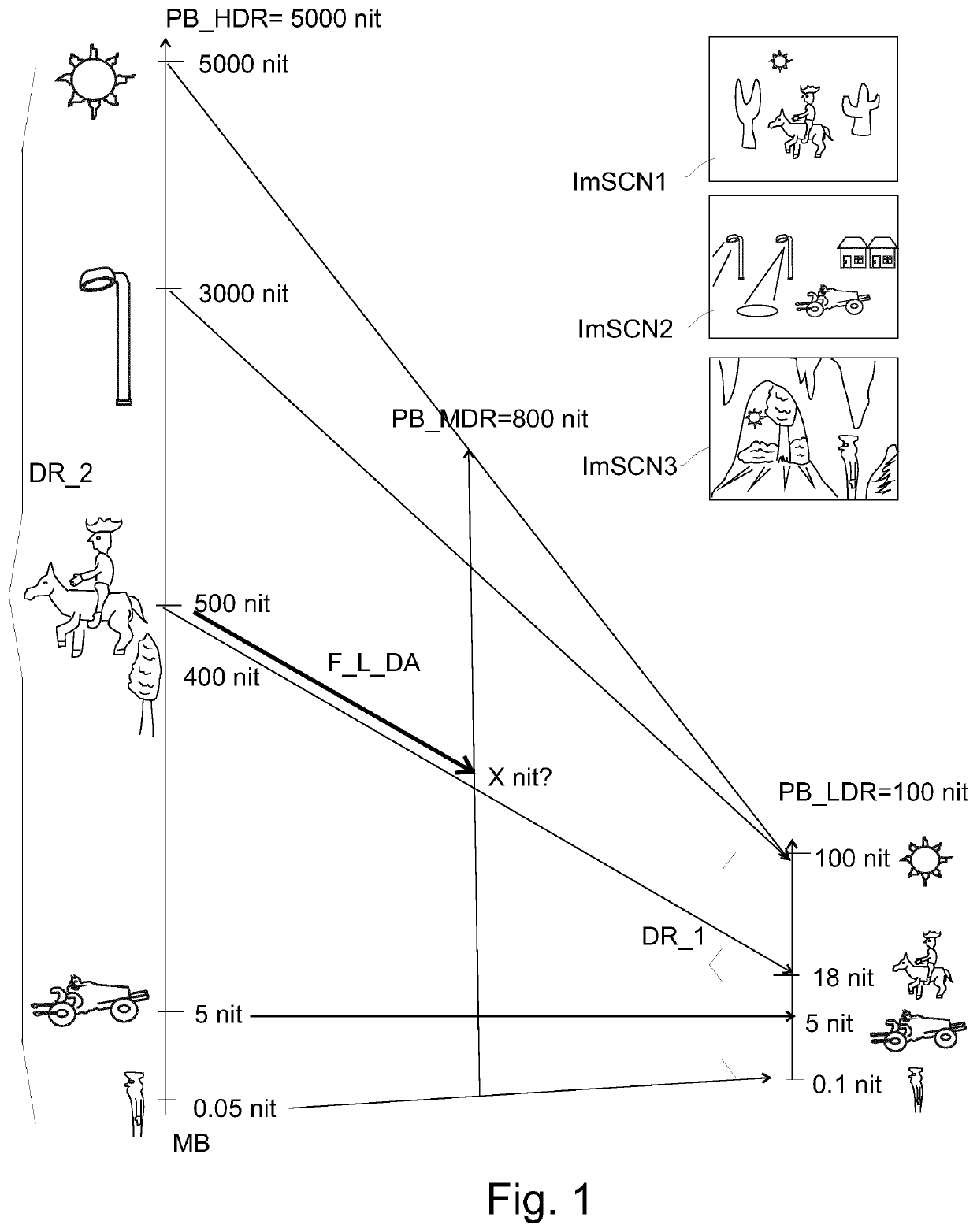Multi-range hdr video coding
a video coding and multi-range technology, applied in image enhancement, image analysis, instruments, etc., can solve the problems of no elegant simple solution, no room available for anything overly bright, and not quite that simpl
- Summary
- Abstract
- Description
- Claims
- Application Information
AI Technical Summary
Benefits of technology
Problems solved by technology
Method used
Image
Examples
Embodiment Construction
"d_n">[0166]FIG. 9 shows generically the new SLHDR2PLUS encoder 900. As input it gets a master HDR image (e.g. a 5000 nit PB_C image MsterHDR), which without wanting to lose generality the reader can assume to have been made at or around the time of encoding by a human color grader using color grading software, e.g. by starting from a RAW camera-captured HDR image (the MsterHDR image being optimized e.g. for a typical evening dim television viewing environment, i.e. its average surround luminance etc.; the present technologies can also work with other or variable environments, but that is rather an issue of display adaptation rather than new methods to create or code HDR images). The grader has also created at least one nice luminance downgrading function FL_50t1, to convert the 5000 nit master HDR image in a corresponding nice looking SDR image (i.e. of usual 100 nit PB_C), and he has done this by filling in some of the partial re-grading aspects of 403, 404 and 405, and some good ...
PUM
 Login to View More
Login to View More Abstract
Description
Claims
Application Information
 Login to View More
Login to View More - R&D
- Intellectual Property
- Life Sciences
- Materials
- Tech Scout
- Unparalleled Data Quality
- Higher Quality Content
- 60% Fewer Hallucinations
Browse by: Latest US Patents, China's latest patents, Technical Efficacy Thesaurus, Application Domain, Technology Topic, Popular Technical Reports.
© 2025 PatSnap. All rights reserved.Legal|Privacy policy|Modern Slavery Act Transparency Statement|Sitemap|About US| Contact US: help@patsnap.com



